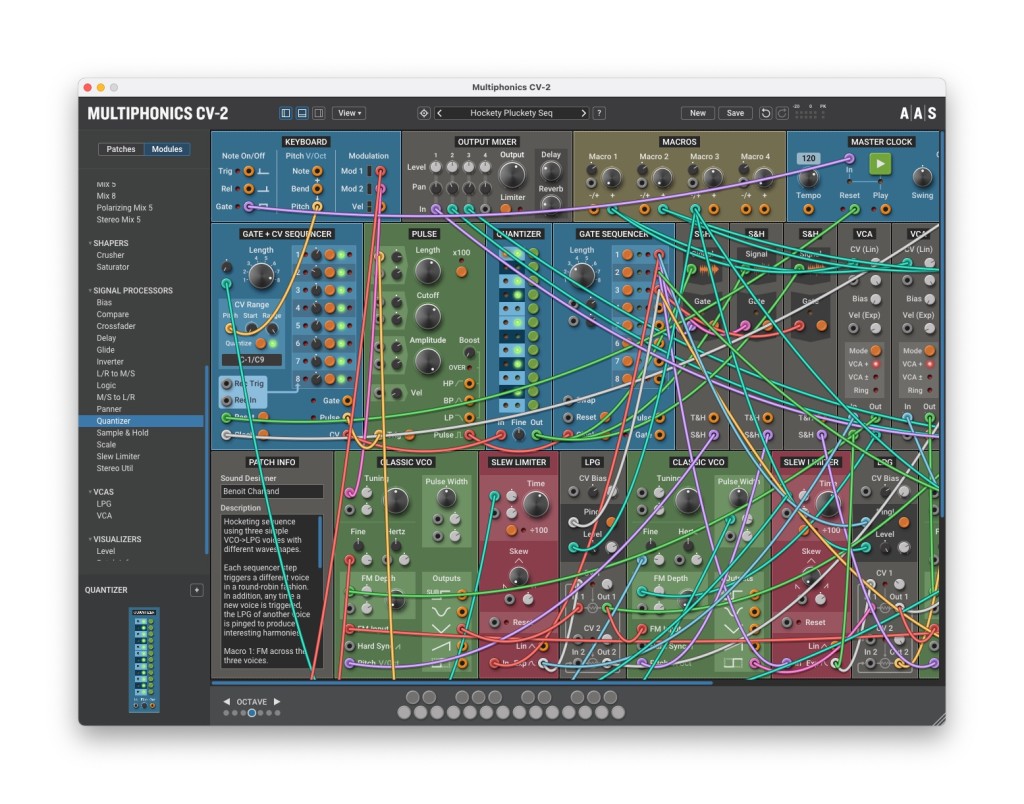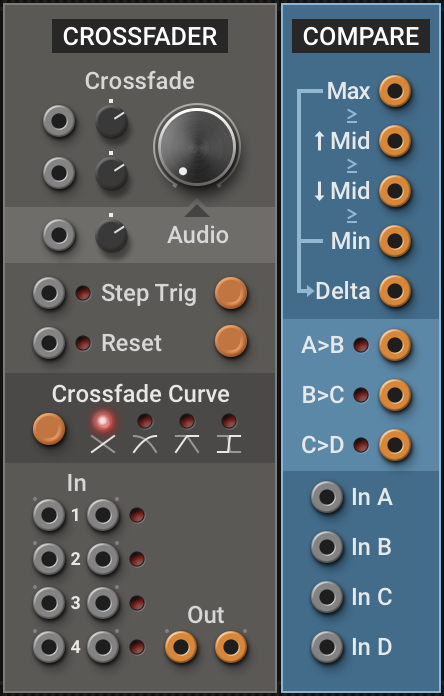AAS has updated Multiphonics CV-1 to CV-2. There are new modules, some workflow improvements, new sound packs, and crucially – you can finally use it with inputs and as an audio effect plug-in. That’s important news from the creators of the unparalleled Objeq filter.

CV-2 has a bunch of new sound pack options, so if you just want some freaky new sounds, AAS can tell you all about those. But let’s skip straight ahead to what’s new in CV-2.
What I’ve grown to really love about Multiphonics CV-1 is actually that it does less. In contrast to the mind-boggling sprawl of Reaktor and VCV Rack or even the growing tools in Cherry Audio Voltage Modular and Softube Modular – and I totally love those platforms for that – Multiphonics does just a few things well. Having fewer but top-notch modules can encourage you to create smarter patches, just like the limitations on a hardware modular.
But where CV-1 was lacking was that you really, really wanted to use these tools as an effect, especially since spectacular filters were at the center. Enter CV-2.
CV-2 delivers that, plus new tools to take advantage of audio input processing, and new and updated modules and workflow improvements, too. (Note that for whatever reason, input is only available when using CV-2 as a plug-in, not in standalone mode.)
New modules

- 3-band Splitter: splits by frequency, mono and stereo
- Compare: sort/compare logic module with 4 inputs (audio or CV) – more on this in a moment.
- Crossfader: up to 4 mono or stereo signals, modulation, and audio-rate modulation. (Oh yeah, crossfaders don’t normally let you do audio-rate FM!)
- Crusher: combo bitrate and sample rate reduction.
- Eq Filter: One equalizer band – low-shelf, peaking, or high-shelf.
- LR – MS, MS – LR for mid/side matrix processing.
- Micro Filters: µAP (all-pass), µBP (band-pass), µHP (high-pass), µLP (low-pass), and µNotch
- Panner: Mono-to-stereo panning with modulation inputs.
- Saturator: soft, hard, asymmetrical saturation.
- Stereo Mix 5
- Stereo Util (mono bass, stereo width, left/right swap)
So wait, back up – little modules, big deal. This means suddenly CV-2 is a go-to filter and mono/stereo processor for basically everything which you can drop into any DAW and patch at will. That might not be so exciting on its own, but with the polished design of the AAS modules and the quality of their filters, it’s a big deal.
Having the Compare module alone transforms patching, as it’s a simple but elegant all-in-one logic tool – with the usual level of AAS polish. (Check the manual.) We should probably do a little mini-tutorial on this, as logic isn’t always obvious to folks (it wasn’t to me at first, either). But figure that you can subtract signals, track minimum, maximums, and even second lowest and second highest voltages, plus gate signals based on comparison.
Gate? Comparison? Yes, think interesting rhythmic stuff.

Updated modules
I didn’t notice this at first, but they have done quite a lot of work on some of our favorite modules, with particular attention to making everything work in stereo.
- Output now has its own 4-channel mixer with panning
- Ladder Filter, Objeq Filter, and State Variable Filter are all now both mono and stereo.
- Delay has its own low-cut and high-cut filters.
- Slew Limiter and Sample & Hold now work better with audio-rate signals. Obviously important now that you can input those.
- Sample & Hold now does track & hold, which is – no joke – my favorite kind of “and hold.” Have to go into that explanation soon, as well.
Workflow improvements
Apart from the Browser being improved and made far less annoying, you now have patching improvements, too:
Multi-patching: Make those stereo connections quicker – just hold down Shift while you drag to patch, and you automatically get stereo connections. That also works with more complex stuff.
Multi-module parameter changes: Here’s another clever way that AAS has nailed this. Hold down Alt (Opt) as you drag or push and you can batch-tweak multiple modules of the same type – so, for instance, line up multiple filters and change the cutoff all at once.
First impressions
I really can’t overstate how important I think it is that Multiphonics now runs as an effect. This is almost overnight the go-to for filtering and panning and mid/side processing tools irrespective of DAW, at least for me. It also means this is now probably the best way to add AAS’ incredible Objeq filter model, which is at the heart of their other physical modeling tools, including even Chromaphone. (There’s also the Objeq Delay, but now that to me is replaced by this.)
Honestly, if you want to replicate the hardware modular experience or have a bunch of modules to choose from, VCV Rack, Reaktor, Cherry Audio, and Softube all have you covered. And I’m sure some will still be disappointed in this, just because AAS are the creators of the ahead-of-its-time Tassman modular system, and Multiphonics is still playing catch-up to that. (CV-3? I hope?)
But make no mistake. I have access to all of those tools, and I’m sure I’ll keep AAS around. (Heh, maybe I’ll even be doing weird things hosting it in the VST host in VCV Rack, too.) And in a way this is the welcome balance to the Eurorack-style patching and the software that has followed it, which is, let’s admit it, delicious chaos and overabundance.
This is just an elegant piece of software and even with all those sound packs available, patching it is a joy. That seems worth some investment of time and energy.
CV-2 is on an intro sale now.
https://www.applied-acoustics.com/multiphonics-cv-2/
Affiliate links / affiliate revenue helps support CDM:
Multiphonics CV-2 on sale @ Plugin Boutique
All Multiphonics deals (including upgrades)